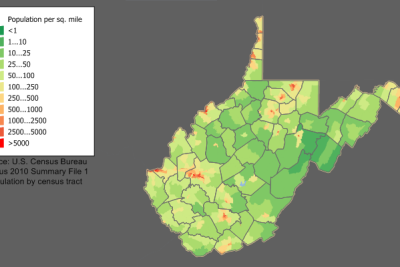
What is the history and evolution of state airlines

The evolution of state airlines has been marked by significant changes in ownership structures, governmental policies, and the global aviation landscape. From early developments in air transport to the rise of national carriers, the concept of state airlines represents a unique blend of patriotism and strategic economic interests. This article delves into the history and evolution of these national airlines, highlighting the shifts in their operational frameworks and the role of governments in this sector.
National airlines have served as vital components of a country's infrastructure, often reflecting its economic power and global presence. The transition from private ownership to state airlines and the subsequent trends of privatization are indicative of broader patterns in transportation and state intervention. This article will provide a detailed examination of historical developments, case studies of leading airlines, and the current status of state airlines worldwide, culminating in an analysis of their future in the ever-changing landscape of global aviation.
- The Concept of National Airlines
- Early Developments in Airline History
- Transition from Private to Public Ownership
- Case Studies: Qantas, Air India, and Others
- Trends in Nationalization and Privatization
- The Role of Governments in Airline Operations
- Current Status of State Airlines Worldwide
- The Rise of Flag Carriers and Their Significance
- Conclusion: The Future of State Airlines
The Concept of National Airlines
At the core of the concept of national airlines is the idea that air transport represents not just a means of travel, but a symbol of national pride and sovereignty. These airlines are typically established with the intent of promoting economic growth, providing employment, and enhancing connectivity both domestically and internationally. National airlines often operate under the auspices of the government, which sees them as extensions of national policy and interests.
Defining State Airlines
State airlines, or national carriers, are often defined as airlines that are owned or significantly influenced by the government of the country in which they operate. This ownership can be total or partial, and it often involves varying levels of government control over operations and strategic direction. The primary objective of these airlines is not only to provide air transport services but also to fulfill government mandates regarding national security, tourism promotion, and economic development.
Early Developments in Airline History
The origins of state airlines can be traced back to the early 20th century when aviation was in its infancy. The development of commercial aviation began with private companies; however, as the potential for air travel became apparent, many governments began to take interest in establishing their own airlines to maintain national control over air transport.
Pioneering Era of Aviation
In the 1920s and 1930s, several key developments laid the groundwork for the future of national airlines. For instance, the establishment of Deutsche Luft Hansa in Germany and Imperial Airways in the UK showcased the growth of commercial aviation. As these airlines blossomed, other countries recognized the need to compete in the growing aviation market, prompting governments to either establish new airlines or acquire existing ones.
Transition from Private to Public Ownership
Many state airlines originated as private entities before transitioning to public ownership. This shift often occurred during or after major conflicts or economic crises when governments sought to stabilize air travel. For instance, the aftermath of World War II prompted many countries to nationalize their airlines, reasserting state control over a crucial transportation sector.
Global Nationalization Trends
Countries around the world began to embrace the nationalization trend during the mid-20th century. Established airlines such as Qantas and Air India transitioned from private ownership to government possession as part of larger national development strategies. These national airlines were seen as essential for ensuring connectivity and facilitating economic expansion in the post-war context.
Case Studies: Qantas, Air India, and Others
Case studies of specific state airlines provide valuable insights into the broader trends of nationalization and privatization. Qantas, which began operations in 1920 as a private company, was nationalized by the Australian government in 1947. Despite being privatized in 1992, Qantas remains emblematic of Australia’s aviation history and strategy, balancing its roots with modern operational requirements.
Air India: A Historical Overview
Air India, founded in 1932, serves as another prominent example of the transition from private to public ownership. The airline was nationalized in 1953 to enhance its capacity to support India's budding economy. Following decades of government control and challenges in operational efficiency, Air India was privatized once again in 2021, indicating a continuing cycle in the ownership of airlines.
Trends in Nationalization and Privatization
The history of state airlines is marked by waves of nationalization and subsequent moves toward privatization. Various geopolitical and economic factors influence these trends, reflecting broader societal shifts and market dynamics. Governments often respond to economic necessities and guidance from international financial institutions, leading to substantial organizational changes within national airlines.
The Cycle of Ownership
The cyclical nature of ownership models illustrates how political ideologies, economic stability, and competition forces shape the fate of state airlines. Countries such as Canada and the UK have experienced complete transitions, from government ownership to fully privatized entities, whereas others like Aeroflot and Turkish Airlines maintain a blend of public and private control.
The Role of Governments in Airline Operations
Governments play a significant role in the operation of state airlines, influencing various aspects including regulations, funding, and strategic objectives. These mandates often extend beyond commercial interests to encompass national interests, such as security and economic growth.
Regulatory Environment
State airlines operate within a highly regulated environment, with government policies often dictating routes, service levels, and pricing strategies. This regulatory framework can either bolster or hinder the operational efficiency of the airlines, shaping their competitive landscape both domestically and internationally.
Current Status of State Airlines Worldwide
Today, the landscape of state airlines is diverse, with varying levels of government involvement across regions. While some airlines have transitioned to complete privatization, others retain state control, either wholly or partially. Regional variations reflect differing political and economic philosophies, providing a rich tapestry of airline operations globally.
Full State Ownership vs. Hybrid Models
Countries like China maintain fully state-owned airlines such as Air China and China Southern Airlines, promoting national interests and establishing a strong presence in global aviation. In contrast, airlines in regions like the Middle East, such as Emirates and Qatar Airways, operate under hybrid models, often enjoying substantial governmental support without outright ownership, allowing them to flourish as global carriers.
The Rise of Flag Carriers and Their Significance
Flag carriers play a critical role in representing their countries on the international stage, serving as symbols of national identity and culture. State airlines that achieve this status enhance their countries' reputations, facilitating cultural exchange and economic interaction.
Symbolism and Identity
Flag carriers often serve strategic purposes beyond mere transportation; they are a means for nations to showcase their cultural heritage and business capabilities. The airlines embody national branding efforts, enabling governments to project soft power globally.
Conclusion: The Future of State Airlines
The future of state airlines appears poised for further evolution as they navigate the complexities of a changing global landscape. The growing trend towards privatization in some regions contrasts sharply with the emphasis on national ownership and control in others. As aviation faces challenges from economic fluctuations, environmental considerations, and technological advancements, the role of governments in shaping the future of state carriers will remain crucial.
Ultimately, state airlines will continue to reflect their respective nations’ aspirations and strategies in the world of air travel, balancing between state control and operational efficiency to adapt to the needs of the future.
Did you find this article helpful? What is the history and evolution of state airlines See more here Education.
Leave a Reply






Related posts